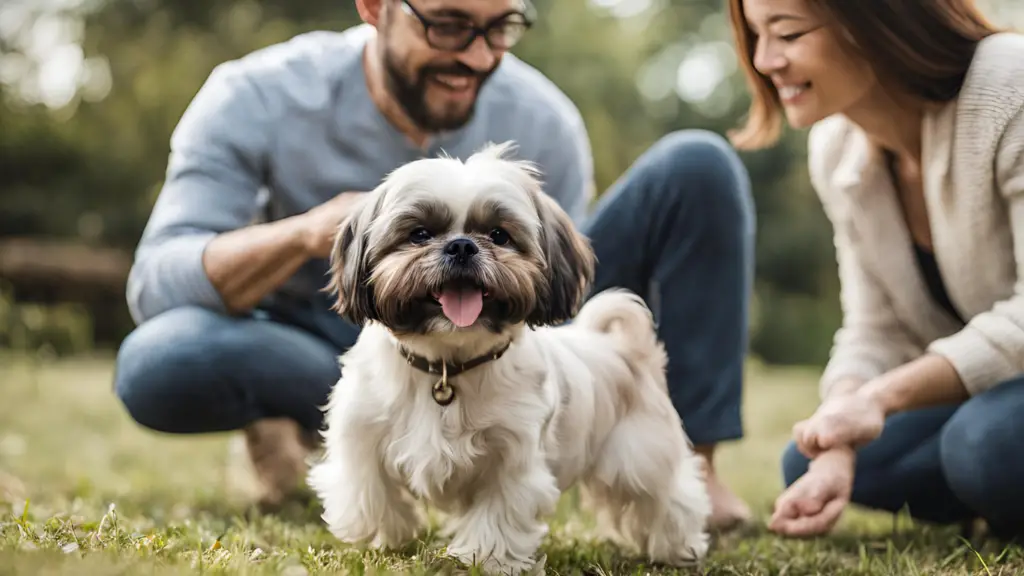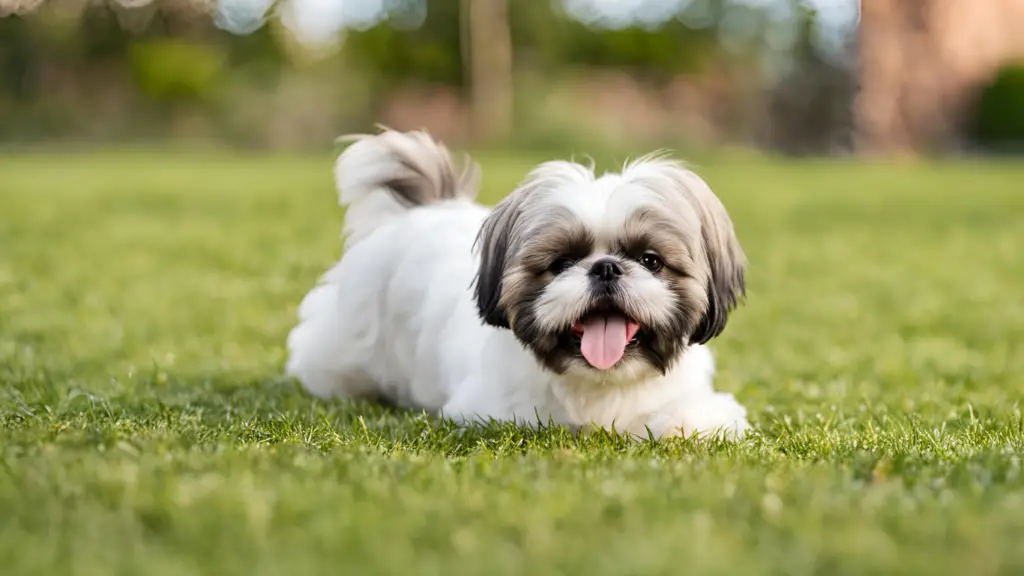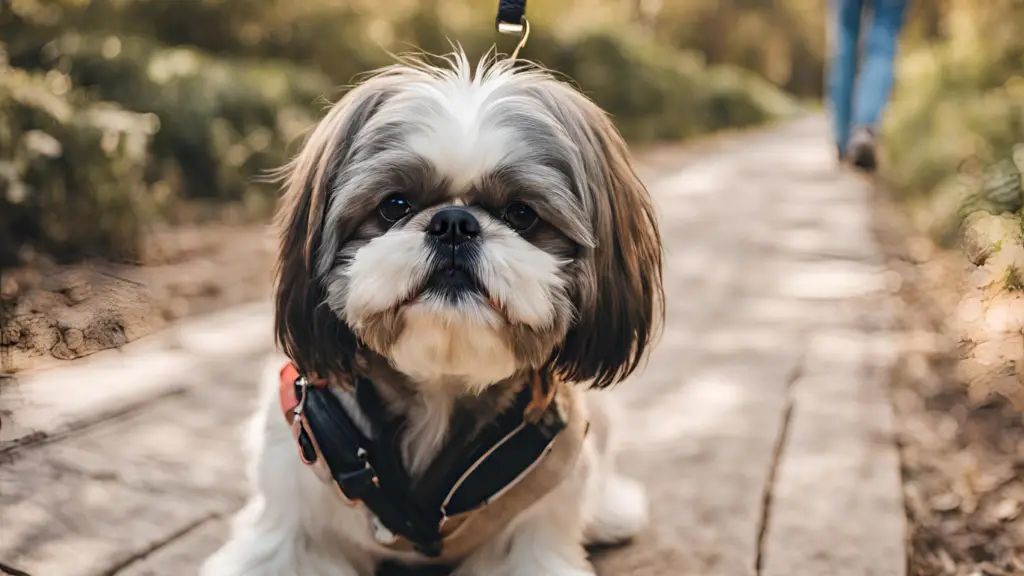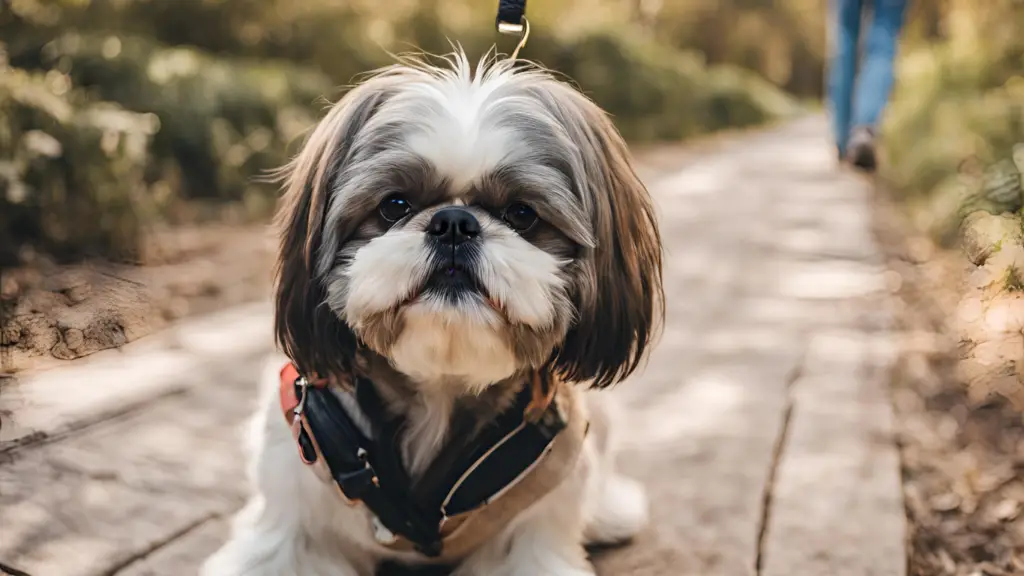
Crate training is an essential part of raising a well-behaved and happy Shih Tzu puppy. When done correctly, it provides your puppy with a safe, comfortable space to relax and helps with house training, managing separation anxiety, and preventing destructive behavior. This guide will walk you through everything you need to know to successfully crate train your Shih Tzu puppy.
Understanding Crate Training

Why Crate Training is Important
Crate training is beneficial for both you and your Shih Tzu puppy. It offers a safe, secure space for your puppy to retreat when it needs rest or feels overwhelmed. Crates can also serve as a useful tool for house training, as dogs naturally avoid soiling their sleeping areas. By crate training your puppy, you can help it learn bladder control, making the house training process smoother and faster.
Moreover, a crate can be a haven for your puppy during stressful situations, such as traveling or during vet visits. It also helps manage separation anxiety by providing a familiar space when you’re not at home. Additionally, crate training can prevent destructive behaviors, as your puppy is less likely to chew on furniture or other items when confined to a safe space.

Crate training also establishes a routine for your Shih Tzu puppy, which can be comforting and reassuring. Dogs thrive on routine, and knowing when it’s time to rest, play, or eat helps them feel more secure. Proper crate training ensures that your puppy views the crate as a positive environment rather than a place of punishment.
Choosing the Right Crate
Selecting the appropriate crate for your Shih Tzu puppy is crucial for successful training. The crate should be large enough for your puppy to stand up, turn around, and lie down comfortably, but not so large that it can use one end as a bathroom. For a Shih Tzu puppy, a small to medium-sized crate is usually ideal.

There are different types of crates available, including wire crates, plastic crates, and soft-sided crates. Wire crates offer good ventilation and visibility, making them a popular choice for many dog owners. Plastic crates are more enclosed and provide a den-like environment, which some dogs may prefer. Soft-sided crates are lightweight and portable, but they may not be as durable for a puppy that likes to chew.
Consider purchasing a crate with a divider panel, which allows you to adjust the size of the crate as your puppy grows. This feature ensures that the crate remains appropriately sized throughout your puppy’s development. Additionally, choose a crate with a removable tray at the bottom for easy cleaning in case of accidents.
Preparing the Crate
Once you’ve selected the right crate, it’s time to make it inviting for your Shih Tzu puppy. Line the crate with soft bedding, such as a blanket or dog bed, to create a comfortable resting area. You can also place a few safe toys inside the crate to encourage your puppy to explore and feel at ease.

Avoid using the crate as a place of punishment, as this can create negative associations. Instead, make the crate a positive space by offering treats, praise, and affection when your puppy enters the crate willingly. You can also feed your puppy meals inside the crate to reinforce positive associations.
Place the crate in a quiet area of your home where your puppy can feel safe but still be part of the family activities. Avoid placing the crate in areas with heavy foot traffic or loud noises, as this can make your puppy feel anxious. If possible, keep the crate in the same room where you sleep at night so your puppy can feel close to you and not isolated.
Introducing Your Puppy to the Crate

Gradual Introduction
Introducing your Shih Tzu puppy to the crate should be a gradual and positive experience. Start by placing the crate in a room where your puppy spends a lot of time. Leave the door open and allow your puppy to explore the crate at its own pace. You can place a few treats or toys inside to entice your puppy to enter the crate voluntarily.
Avoid forcing your puppy into the crate or closing the door too soon. Give your puppy time to become familiar with the crate and understand that it’s a safe and comfortable space. Continue to offer praise and treats whenever your puppy enters the crate on its own.

Over the next few days, gradually increase the amount of time your puppy spends in the crate with the door closed. Start with short intervals, such as five minutes, and slowly work up to longer periods as your puppy becomes more comfortable. Always ensure your puppy has had a chance to relieve itself before being crated for an extended period.
Creating Positive Associations
To help your Shih Tzu puppy develop positive associations with the crate, use treats and praise generously. Each time your puppy enters the crate, offer a small treat and some encouraging words. You can also give your puppy special toys or chews that it only gets while in the crate, making it a special place for rewards.
Feeding your puppy’s meals in the crate is another effective way to create positive associations. Start by placing the food bowl near the entrance of the crate and gradually move it inside over time. This helps your puppy associate the crate with positive experiences, such as eating.

If your puppy shows signs of reluctance or anxiety about entering the crate, remain patient and avoid forcing the issue. Take a step back and try offering more treats and encouragement, or consider moving the crate to a quieter location. Remember that patience and consistency are key to successful crate training.
Managing Separation Anxiety
Crate training can be particularly beneficial in managing separation anxiety, which is common in Shih Tzus. To prevent your puppy from developing anxiety when left alone, start by leaving it in the crate for short periods while you’re still at home. Gradually increase the time you spend out of the room while your puppy is in the crate, always returning before it becomes distressed.
If your puppy starts whining or barking while in the crate, it’s important not to let it out immediately. Wait until your puppy has settled down before opening the crate door, so it doesn’t learn that whining will get it out of the crate. Consistency in this approach will help your puppy learn to be calm and comfortable while alone.
Over time, your puppy will become more accustomed to being in the crate when you’re not around, reducing the likelihood of separation anxiety. Always provide a safe toy or chew to keep your puppy occupied while in the crate, and make sure the crate is a comforting and familiar space.
Establishing a Crate Training Routine

Creating a Schedule
Consistency is crucial when crate training your Shih Tzu puppy. Establishing a daily routine helps your puppy understand what to expect and makes the training process smoother. Create a schedule that includes regular crate time throughout the day, such as during naps, after playtime, and at bedtime.
Begin by crating your puppy for short periods when you’re home and gradually extend the duration as your puppy becomes more comfortable. Incorporate crate time into your daily routine so that it becomes a normal part of your puppy’s day. For example, you might crate your puppy while you prepare meals or during your work-from-home hours.
Consistency with feeding, potty breaks, and playtime is also important. Feed your puppy at the same times each day and follow up with a potty break before crating. This helps establish a routine that your puppy can rely on, reducing anxiety and making the crate training process more predictable.
Nighttime Crate Training

Crating your Shih Tzu puppy at night is an effective way to establish good sleeping habits and prevent accidents. Place the crate in your bedroom or nearby, so your puppy feels secure knowing you’re close. This proximity can also help with house training, as you’ll be able to hear if your puppy needs a potty break during the night.
Before bedtime, make sure your puppy has had a chance to relieve itself and has had some time to wind down. Place a comfortable blanket or bed in the crate and encourage your puppy to settle down for the night. Use a calming voice and offer a treat or special toy to make bedtime a positive experience.
If your puppy wakes up during the night, calmly take it outside to relieve itself and then return it to the crate. Avoid engaging in play or too much interaction during nighttime potty breaks, as this can make it harder for your puppy to settle back down.
Over time, your puppy will learn that the crate is its sleeping space, and nighttime crate training will help establish a healthy sleep routine. With consistency and patience, your puppy will become comfortable sleeping through the night in its crate.
Potty Training with Crate Training

Crate training is a powerful tool for potty training your Shih Tzu puppy. Dogs naturally avoid soiling their sleeping areas, so crate training encourages your puppy to hold its bladder until it’s let outside. Follow a consistent schedule of feeding, crating, and potty breaks to help your puppy develop good habits.
Immediately after your puppy wakes up, after meals, and after playtime, take it outside to the designated potty area. Use a consistent command or cue, such as “Go potty,” to signal what you want your puppy to do. Praise and reward your puppy immediately after it successfully goes potty outside.
If your puppy has an accident in the crate, avoid scolding it, as this can create anxiety around the crate. Instead, clean the crate thoroughly to remove any odor, and evaluate whether your puppy is being crated for too long between potty breaks.
As your puppy grows, it will develop better bladder control, and you can gradually increase the time between potty breaks. Be patient and consistent, and soon your Shih Tzu puppy will be reliably potty trained.
Troubleshooting Common Crate Training Issues

Dealing with Whining and Barking
It’s common for puppies to whine or bark when first introduced to crate training. Your Shih Tzu may be adjusting to the new routine and testing the boundaries of its environment. It’s important not to give in to the whining or barking, as this can reinforce the behavior.
If your puppy starts whining or barking in the crate, wait until it quiets down before letting it out. This teaches your puppy that calm behavior is rewarded, not whining or barking. Be sure to ignore any attention-seeking behavior and only offer praise when your puppy is calm and quiet.
If the whining or barking persists, evaluate whether your puppy’s needs are being met. Ensure that your puppy has had a chance to relieve itself, has had enough exercise, and is not too hot or cold. If all its needs are met, continue to practice patience and consistency in your training.
Addressing Crate Aversion

Some puppies may develop an aversion to the crate, refusing to enter or becoming distressed when inside. If this happens, take a step back in the training process and focus on creating positive associations with the crate. Leave the crate door open and place treats or toys inside to encourage your puppy to explore at its own pace.
Avoid forcing your puppy into the crate, as this can create a negative association. Instead, use a calm and encouraging tone to coax your puppy inside. You can also try feeding your puppy meals in the crate to build positive connections.
If your puppy continues to resist the crate, consider whether the crate size or location is contributing to the issue. Some puppies may feel more comfortable in a smaller or more enclosed space, while others may prefer more visibility. Experiment with different setups to find what works best for your puppy.
Managing Accidents in the Crate

Accidents can happen during crate training, especially with young puppies. If your Shih Tzu has an accident in the crate, it’s important not to punish it. Instead, clean the crate thoroughly to remove any lingering odors and reassess your potty break schedule.
Consider whether your puppy is being crated for too long between potty breaks or if it’s consuming too much water before being crated. Adjust your routine accordingly to help prevent future accidents.
If accidents continue to happen, evaluate whether your puppy’s crate is too large. Puppies are less likely to soil their sleeping area, so a crate that’s too big may encourage accidents. Use a divider panel to reduce the crate size if necessary.
Advanced Crate Training Techniques

Crate Training for Travel
Once your Shih Tzu puppy is comfortable with its crate, you can start using the crate for travel. Crating your puppy during car rides ensures its safety and reduces the risk of distraction while driving. Introduce your puppy to the travel crate gradually, just as you did with the home crate.
Start by taking short car rides with your puppy in the crate, offering treats and praise for calm behavior. Gradually increase the duration of the trips as your puppy becomes more comfortable. Ensure that the crate is securely fastened in the car to prevent it from moving during the ride.
Crate training for travel also helps your puppy feel more secure during trips to the vet or other outings. With consistent practice, your Shih Tzu will view the crate as a safe and familiar space, whether at home or on the go.
Crate Training for Multiple Dogs

If you have more than one dog, crate training can still be effective, but it requires some additional considerations. Each dog should have its own crate, as sharing a crate can lead to conflicts and reduce the effectiveness of the training. Place the crates in separate areas to give each dog its own space.
Crate train each dog individually, following the same steps as you would with a single dog. Ensure that each dog has positive experiences with its crate and receives individual attention and rewards during training.
Once both dogs are comfortable with their crates, you can start crating them in the same room but still in separate crates. This allows the dogs to be near each other without sharing a confined space, reducing stress and promoting positive behavior.
Crate Training an Older Shih Tzu

While crate training is often associated with puppies, it’s also possible to crate train an older Shih Tzu. The process may take longer, as older dogs may have established habits or previous experiences with crates, but with patience and consistency, it can be done.
Start by introducing the crate gradually, just as you would with a puppy. Use treats and positive reinforcement to encourage your older Shih Tzu to explore the crate and develop positive associations. Be patient, as older dogs may take longer to adjust to new routines.
If your older Shih Tzu has never been crated before, take extra care to ensure that the crate is comfortable and inviting. Provide plenty of soft bedding and consider placing the crate in a familiar, quiet area of your home.
With time and patience, your older Shih Tzu can learn to enjoy the crate and benefit from the security and routine it provides.
The Importance of Patience and Consistency in Crate Training

Being Patient with Your Puppy
Crate training requires patience, especially with a young Shih Tzu puppy. It’s important to remember that every puppy is different, and some may take longer to adjust to the crate than others. Avoid rushing the process or becoming frustrated if progress seems slow.
If your puppy is struggling with crate training, take a step back and evaluate your approach. Consider whether you’re moving too quickly or if there are factors that may be causing your puppy stress. Be willing to adjust your training plan and give your puppy the time it needs to feel comfortable.
Patience is key to successful crate training. With time, your puppy will learn to associate the crate with positive experiences and will begin to view it as a safe and comforting space. Celebrate small victories, and remember that every step forward is progress.
Consistency is Key

Consistency is essential for successful crate training. Establish a routine and stick to it, as this helps your puppy understand what to expect and reduces anxiety. Consistency in feeding, potty breaks, and crate time will help your puppy develop good habits and make the training process smoother.
If you’re sharing crate training responsibilities with other family members, ensure that everyone is on the same page. Use the same commands, cues, and routines so that your puppy doesn’t become confused. Consistency in your approach will reinforce the training and help your puppy learn more quickly.
Remember that consistency extends beyond the training process. Once your puppy is crate trained, continue to use the crate regularly, even when you’re home. This helps maintain the positive associations your puppy has developed with the crate and ensures that it remains a valuable tool in your puppy’s routine.
Conclusion

Crate training your Shih Tzu puppy is an essential part of raising a well-behaved, happy dog. By providing a safe, comfortable space for your puppy, you can help it develop good habits, manage separation anxiety, and prevent destructive behavior. Remember that crate training takes time, patience, and consistency, but the rewards are well worth the effort.
Follow the steps outlined in this guide, and soon your Shih Tzu puppy will view the crate as a positive and comforting space. With proper crate training, your puppy will grow into a well-adjusted adult dog that feels secure and confident in its environment.
As with all aspects of dog training, the key to success is building a strong, trusting relationship with your puppy. Be patient, stay consistent, and celebrate the small victories along the way. In time, you and your Shih Tzu will both enjoy the benefits of a well-trained, crate-savvy companion.


